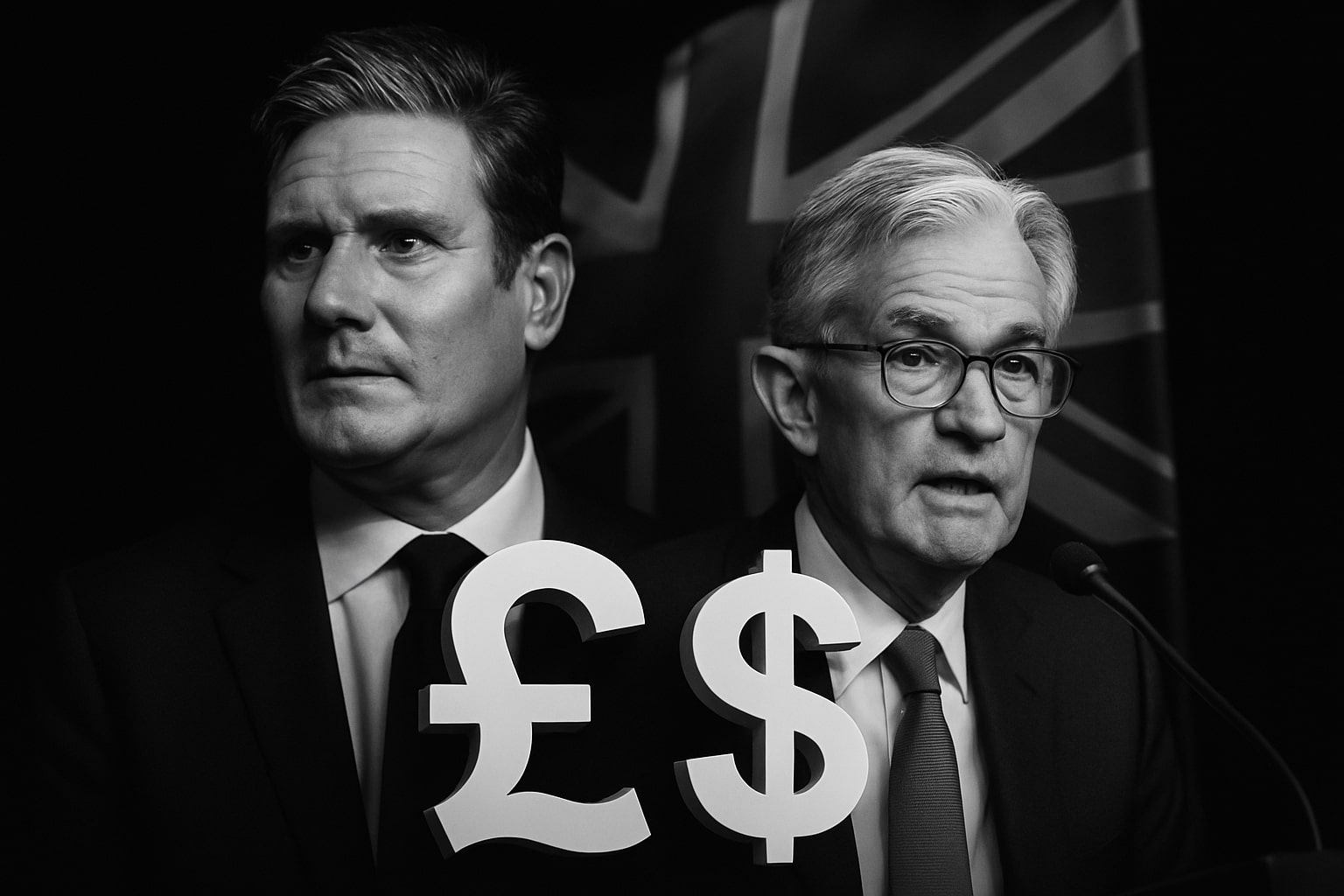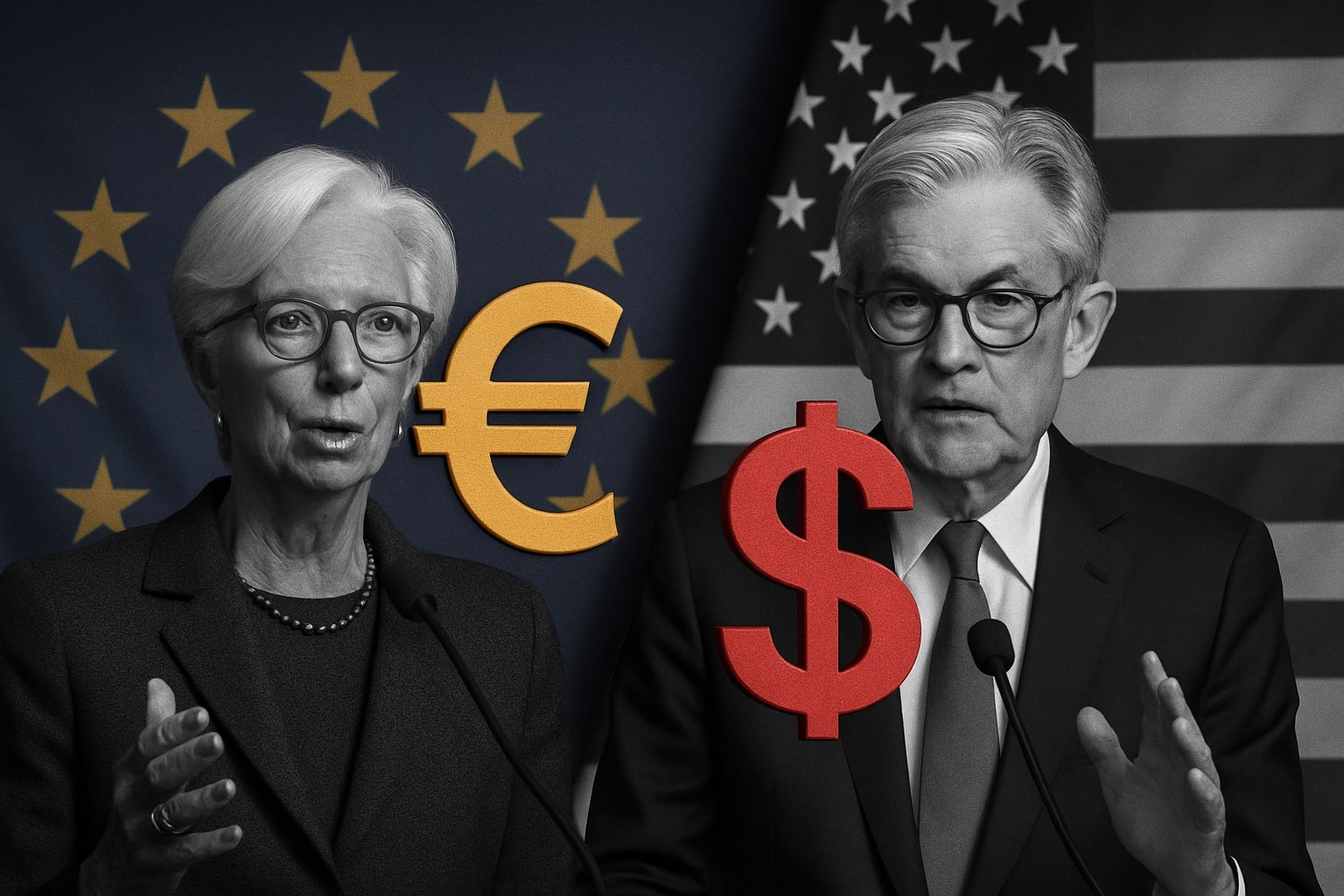
USD/JPY Price Forecast - Dollar/Yen Steadies Near 154.00 as U.S. Fiscal Optimism Offsets BoJ Policy Caution
USD/JPY holds firm near 154.00 after the U.S. Senate advanced a government funding bill, boosting the dollar, while BoJ policymakers remain divided, with only 5 of 13 supporting a hawkish tone | That's TradingNEWS
USD/JPY (Dollar/Yen) Consolidates Near 154.00 as Fiscal Optimism in Washington Clashes with BoJ’s Reluctant Hawkish Shift
The USD/JPY (Dollar/Yen) pair remains volatile but resilient, holding just below its eight-month high at 154.49, as optimism over a possible U.S. government shutdown resolution offsets renewed caution from Tokyo. In Monday’s Asian session, the pair traded near 153.90–154.10, supported by improved fiscal sentiment and rising Treasury yields, while Japan’s policy ambiguity kept the yen under pressure.
Political Relief in the U.S. Bolsters Dollar Strength
The tone in Washington continues to drive the short-term direction of USD/JPY. Reports confirming that the U.S. Senate voted 60–40 in favor of advancing a bipartisan spending bill to reopen the federal government have strengthened the dollar, calming risk sentiment after weeks of fiscal paralysis. The proposed funding measure would maintain operations through January 31, 2026, ensuring continued financing for key programs such as SNAP and Veterans Affairs. The development follows comments from President Donald Trump, who expressed confidence that the impasse was “very close to ending.” This easing of fiscal risk has revived Treasury buying interest, but the 2-year yield remains anchored near 4.68%, showing that traders still anticipate Fed policy easing in December.
Federal Reserve Outlook: The Key Variable for USD/JPY
With the government reopening likely to allow the release of delayed economic data, investors now turn to the Federal Reserve’s December meeting. FedWatch data show that the probability of a rate cut rose from 63.0% on October 31 to 66.9% on November 7, reflecting a softening macro tone. While officials like Mary Daly and Alberto Musalem highlighted resilient economic conditions, both hinted that inflation, now hovering close to 3.0%, could justify a cautious approach. This divergence between market expectations for rate cuts and the Fed’s measured stance leaves USD/JPY oscillating within a narrow band as traders price competing forces of monetary easing and U.S. growth strength.
Bank of Japan’s Mixed Messaging and Policy Paralysis
Across the Pacific, the Bank of Japan (BoJ) continues to send conflicting signals. Board member Junko Nakagawa emphasized that policy decisions must remain deliberate given global trade uncertainty, particularly around tariff policies. The BoJ’s Summary of Opinions revealed internal divisions: of thirteen policymakers, only five favored a hawkish bias, with the remainder arguing for patience to gauge the impact of corporate wage increases and Prime Minister Sanae Takaichi’s new economic agenda. The central bank reaffirmed its view that inflation could stabilize near 2% by late 2026, but wage-driven demand must first prove sustainable.
This cautious stance has prolonged the yen’s weakness. Policymakers’ reluctance to signal tightening keeps real yields in Japan deeply negative. The 10-year JGB yield remains near 0.96%, while the U.S.–Japan spread sits above 370 basis points, maintaining strong upward pressure on USD/JPY.
Verbal Intervention Risk and Market Sensitivity
Japanese officials are again voicing concern over yen depreciation. Finance Minister Katayama reiterated that authorities are “watching FX moves with a high sense of urgency,” especially as the pair trades consistently above 154.00. Historically, verbal interventions intensify once USD/JPY crosses 154.20–154.50, with actual action often triggered if speculative momentum accelerates beyond 155.00. Traders recall that in 2024, coordinated action by the Ministry of Finance (MOF) caused a 1.8-yen intraday reversal, underscoring the government’s willingness to defend psychological levels. Still, market positioning remains skewed toward long-USD exposure, with CFTC data showing net yen shorts at 118,000 contracts, near a two-year peak.
Technical Landscape: Descending Triangle and Key Pivot Zones
From a technical perspective, the USD/JPY (Dollar/Yen) chart displays a narrowing descending triangle, with successive lower lows forming against a flat top near 154.40, representing the 76.4% Fibonacci retracement of the 2025 high-to-low range. The 21-day moving average aligns with immediate support at 152.50, followed by deeper support at 151.60 (61.8% Fib). Momentum indicators show early signs of exhaustion — RSI slipped to 49, while MACD histogram turned negative, implying slowing bullish momentum.
A daily close below 152.50 could trigger deeper correction toward 150.90, while sustained closes above 154.40 would open the path toward 155.00 and the April high of 155.23. Volatility remains muted, with implied one-month options pricing a 7.6% annualized move, indicating confidence that the BoJ will avoid immediate intervention.
Macro Divergence: Fed Caution vs. BoJ Inertia
The divergence between U.S. and Japanese policy continues to dominate medium-term direction. The Fed’s gradual easing bias, reinforced by soft labor data and a retreat in inflation expectations, contrasts sharply with the BoJ’s ultra-slow normalization process. Household consumption in Japan, representing 55% of GDP, remains sluggish despite rising nominal wages. September’s household spending dropped 2.7% YoY, marking the seventh consecutive monthly decline. This weak domestic demand undermines arguments for tightening and strengthens the structural bearish case for the yen.
In the U.S., fiscal stability following the shutdown deal could reignite Treasury issuance, potentially steepening the yield curve. The 10-year yield, now near 4.39%, remains elevated, supporting dollar carry attractiveness. The spread advantage ensures persistent capital flows out of the yen into higher-yielding U.S. assets, anchoring USD/JPY above the 152.00 floor despite technical overbought readings.
Read More
-
JEPQ ETF (NASDAQ:JEPQ) Climbs Toward $59 as 10.3% Yield and $31B AUM Cement Its Status as JPMorgan’s Income Powerhouse
10.11.2025 · TradingNEWS ArchiveStocks
-
XRPI & XRPR ETFs Rally Over 8% as XRP Trades Above $2.53 — DTCC Listings Ignite Institutional XRP ETF Boom
10.11.2025 · TradingNEWS ArchiveCrypto
-
Natural Gas Price (NG=F) Surges Above $4.40 as Record LNG Exports and Tight Storage Ignite Bullish Winter Rally
10.11.2025 · TradingNEWS ArchiveCommodities
-
GBP/USD Price Forecast - Pound Steadies at 1.3150 as U.S. Shutdown Progress Lifts Sentiment
10.11.2025 · TradingNEWS ArchiveForex
Investor Sentiment and Hedge Positioning
Institutional flows reveal cautious optimism on the dollar. Hedge funds remain net long USD/JPY, but option traders have increased demand for downside protection, with 25-delta risk reversals narrowing to -0.23 from -0.38 last week. This reflects moderate hedging against potential intervention or a dovish surprise from the Fed. Meanwhile, Japanese corporates are taking advantage of the weak yen, repatriating profits and locking forward contracts around 153.50, providing periodic supply pressure that tempers the pair’s rallies.
Global equity recovery and softer commodity prices have also reduced safe-haven demand for the yen. The Nikkei 225 gained 0.9% to trade near 40,650, while energy import costs declined due to Brent crude’s retreat toward $84.70 per barrel, mitigating Japan’s trade deficit concerns.
Key Data to Watch: Inflation, Wages, and U.S. Labor Reports
Looking ahead, both sides of the pair will be influenced by incoming data. Japan’s core CPI, last measured at 2.7% YoY, will test the BoJ’s conviction that price stability is within reach. Any uptick toward 3.0% may revive expectations of a rate adjustment in Q1 2026, though current guidance suggests the next policy shift would likely be symbolic rather than material. In the U.S., upcoming CPI and PPI prints, alongside November’s Non-Farm Payrolls, will determine whether the Fed’s December cut odds hold above 65%.
TradingNews Verdict: HOLD (Neutral Bias, Range 152.00–155.00)
After consolidating all drivers — fiscal optimism, Fed outlook, BoJ caution, and intervention risk — USD/JPY (Dollar/Yen) remains confined within a strategic balance. While strong U.S. fundamentals support the dollar, rising intervention talk and weakening U.S. data argue against sustained breakouts. The short-term bias remains neutral, with a tactical range of 152.00–155.00. A confirmed breakout above 155.20 would tilt sentiment bullish toward 156.40, whereas a close below 151.60 could open downside toward 149.90.
For now, both policymakers and traders appear locked in a waiting game: Washington’s fiscal clarity strengthens the dollar, but Tokyo’s caution lingers like a shadow — ensuring that USD/JPY remains a two-way trade, volatile yet anchored near historic highs.



















